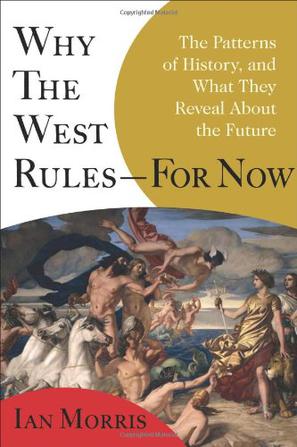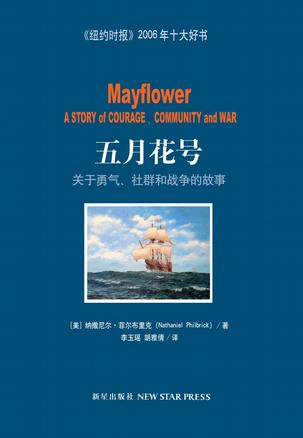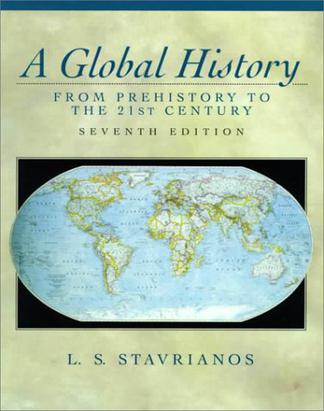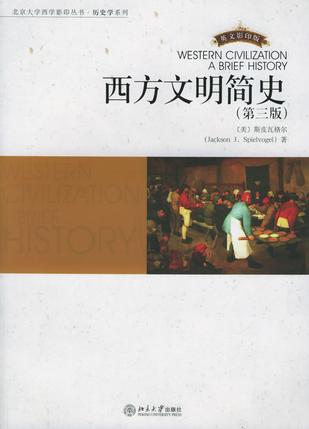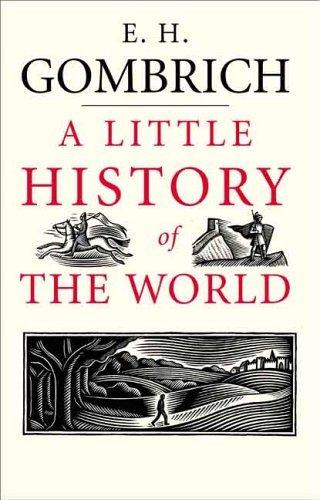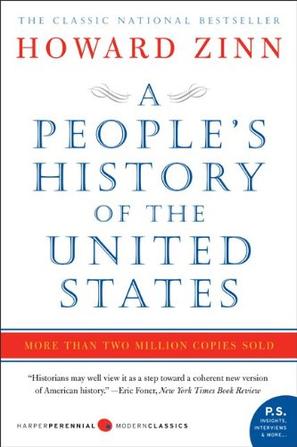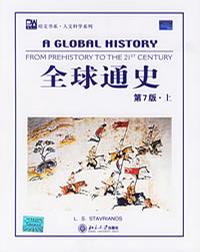欢迎来到相识电子书!
标签:History
-
盘丝洞1927
《中国电影资料馆馆藏丛书之〈盘丝洞1927〉》一书主要围绕遗落在海外的早期电影拷贝《盘丝洞》重回祖国这一重大事件,用详细的早期文字图片与报道、事件参与者的口述、拷贝技术参数、电影放映研讨会实录、电影杂志特刊修复等数据和资料,记录历史、跟踪历史、展示历史,全面呈现了这一“影海遗珠”的价值与意义。 -
卡斯特罗与古巴
在哥伦布于1492年发现新大陆之后的近三个世纪里,古巴这颗"加勒比海明珠"在西班牙的美洲帝国内仅是在经济方面扮演着一个微不足道的小角色。在古巴首次采掘出金矿后,西班牙征服者们开始在这里种植甘蔗、烟草和咖啡。但事实上,由于古巴岛所处的地理位置正好是新大陆和西班牙之间的海上通道,所以它最初发挥的是行政和战略方面的功能。西班牙人对当地土著进行大规模的屠杀,导致当地人口锐减,故古巴对劳动力的有限需求(当地的经济缺乏活力的结果)主要通过由非洲输入的奴隶来满足。(直到19世纪中叶,古巴对体力劳动者的需求仍十分有限。) -
Winston Churchill The Gathering Storm The Second World War Volume I
在线阅读本书 诺贝尔文学奖得主、英国前首相丘吉尔全景式历史巨著 入选美国“当代文库100”20世纪百大英文非小说 “一项文学奖本来意在把荣誉给予作者,而这一次却相反,是作者给了这项文学奖以荣誉。” ——瑞典文学院院士在为丘吉尔颁发诺贝尔奖时致辞 “在黑暗的年代里,他的言语以及与之相应的行动,唤起了世界各地千百万人们心中的信念和希望……在人类冲突的领域里,以前还从未发生过这样的事:如此众多的人都应该深深地感激一个人。” ——瑞典文学院院士利列斯特兰德 “这确实是一本伟大的书,它撼动了人们的心灵,并为这段影响历史的过程留下了忠实记录。” ——《西部邮讯》 “何其幸运,我们拥有这些珍贵的财产,它将会流传后世,让后人们阅读再三。” ——查尔斯·韦博斯爵士 第二次世界大战回忆录是前英国首相温斯顿·丘吉尔在第二次世界大战刚结束之后著作的六部书。他以二战时期英国首相的亲身经历,并引用大量政府文件和个人纪录,记述1930年代初到二战结束期间的主要国际事件,尤其是英国的政治和军事活动。 全书按事件发生时间分为六册: 第一卷《风云紧急》The Gathering Storm(1919年-1940年5月) 第二卷《最光辉的时刻》The Finest Hour(1940年5月-1940年底) 第三卷《伟大的同盟》The Grand Alliance(1941年) 第四卷《命运的关键》The Hinge of Fate(1942年-1943年5月) 第五卷《紧缩包围圈》Closing the Ring(1943年6月-1944年6月) 第六卷《胜利与悲剧》Triumph and Tragedy(1944年6月 -1945年8月世界大战结束) 1941年上半年,英国仍在北非、地中海、中东和大西洋上孤军奋战,损失军舰和商船共300万吨之巨,情势非常危急。罗斯福决定在冰岛设立基地,由美军参与护航。 4月13日,日苏签定中立条约;美日间有关太平洋问题的谈判却毫无进展,因为美方坚持日本先从中国撤兵。 6月22日,苏联突遭德军袭击,顷刻间西部边界就被全线突破,损失惨重。丘吉尔当初预期德、苏必将开战的时刻,终于到来。英国向苏军输送军火物资,改变了英国孤立作战的情势。 7月起,美国大力供应英苏所需军火;8月份,英、美通过“大西洋宪章”,奠定日后建立联合国的思想基础。 12月7日,日军偷袭珍珠港,重创美国太平洋舰队,德国向美国宣战,美国正式参战。丘吉尔所设想的英、美、苏三国的伟大联盟终于实现。 Book Description The first volume of Churchill's Noble-Prize winning six-part chronicle of World War II. THE GATHERING STORM depicts the rise of Hitler and the indifference of the leaders of the European democracies to the clouds of the gathering storm. Churchill incorporate contemporary documentation and his own reminiscence in this opening memoir. -
The Innovators
Following his blockbuster biography of Steve Jobs, The Innovators is Walter Isaacson’s revealing story of the people who created the computer and the Internet. It is destined to be the standard history of the digital revolution and an indispensable guide to how innovation really happens. What were the talents that allowed certain inventors and entrepreneurs to turn their visionary ideas into disruptive realities? What led to their creative leaps? Why did some succeed and others fail? In his masterly saga, Isaacson begins with Ada Lovelace, Lord Byron’s daughter, who pioneered computer programming in the 1840s. He explores the fascinating personalities that created our current digital revolution, such as Vannevar Bush, Alan Turing, John von Neumann, J.C.R. Licklider, Doug Engelbart, Robert Noyce, Bill Gates, Steve Wozniak, Steve Jobs, Tim Berners-Lee, and Larry Page. This is the story of how their minds worked and what made them so inventive. It’s also a narrative of how their ability to collaborate and master the art of teamwork made them even more creative. For an era that seeks to foster innovation, creativity, and teamwork, The Innovators shows how they happen. -
Why the West Rules--For Now
Why does the West rule? In this magnum opus, eminent Stanford polymath Ian Morris answers this provocative question, drawing on 50,000 years of history, archeology, and the methods of social science, to make sense of when, how, and why the paths of development differed in the East and West — and what this portends for the 21st century. There are two broad schools of thought on why the West rules. Proponents of "Long-Term Lock-In" theories such as Jared Diamond suggest that from time immemorial, some critical factor— geography, climate, or culture perhaps — made East and West unalterably different, and determined that the industrial revolution would happen in the West and push it further ahead of the East. But the East led the West between 500 and 1600, so this development can't have been inevitable; and so proponents of "Short-Term Accident" theories argue that Western rule was a temporary aberration that is now coming to an end, with Japan, China, and India resuming their rightful places on the world stage. However, as the West led for 9,000 of the previous 10,000 years, it wasn't just a temporary aberration. So, if we want to know why the West rules, we need a whole new theory. Ian Morris, boldly entering the turf of Jared Diamond and Niall Ferguson, provides the broader approach that is necessary, combining the textual historian's focus on context, the anthropological archaeologist's awareness of the deep past, and the social scientist's comparative methods to make sense of the past, present, and future— in a way no one has ever done before. -
Logics of History
While social scientists and historians have been exchanging ideas for a long time, they have never developed a proper dialogue about social theory. William H. Sewell Jr. observes that on questions of theory the communication has been mostly one way: from social science to history. Logics of History argues that both history and the social sciences have something crucial to offer each other. While historians do not think of themselves as theorists, they know something social scientists do not: how to think about the temporalities of social life. On the other hand, while social scientists’ treatments of temporality are usually clumsy, their theoretical sophistication and penchant for structural accounts of social life could offer much to historians. Renowned for his work at the crossroads of history, sociology, political science, and anthropology, Sewell argues that only by combining a more sophisticated understanding of historical time with a concern for larger theoretical questions can a satisfying social theory emerge. In Logics of History, he reveals the shape such an engagement could take, some of the topics it could illuminate, and how it might affect both sides of the disciplinary divide. -
五月花号
英文名:Mayflower:A Story of Courage, Community, and War 《纽约时报》2006年十大好书之一。 美国的源头在何处? “五月花号”的航行以及欧洲移民登上美洲大陆最初的故事,是一部被历史湮没的、时间跨度长达五十五年的豪壮史诗,著名作家菲尔布里克生动再现了这次航行,掀开了普利茅斯殖民地以及一系列美国传奇背后的真实。 第一个感恩节的欢乐只是新移民的故事的开始,1620年至1676年,正是各种各样的危机和战争,塑造了今天美国的雏形。本书向为宗教信仰不惜一切的真正清教徒的勇气致敬,也盛赞美洲土著人的温文尔雅和慷慨大度,更描绘了双方的智慧和惨烈的战争场景。作战双方的后代多年后才意识到,如果两个民族放弃共同生存的艰苦努力,带来重大后果多么令人恐惧。三百八十多年后的今天,在一个日渐繁杂、危机也与日俱增的世界里,《五月花》的故事对于今天更具意义。 -
A Global History
Designed for courses in World History and World Civilization, this best-selling, classic exploration of world history takes an interdisciplinary global (rather than a regional or national) approach–tracing those major forces, movements, and events that have had a world-wide impact. It stresses connections between the past, present and future, emphasizing the question “What does it mean for us today?” The Seventh Edition reevaluates the course of human history with an eye toward the millennium, reflecting in its coverage the end of the cold war and the dawning possibilities for a new type of global history. This best-selling, classic exploration of world history takes an interdisciplinary global (rather than a regional or national) approach -- tracing those major forces, movements, and events that had a world-wide impact. It stresses connections between the past, present and future and poses the question "What does it mean for us today?" --This text refers to an out of print or unavailable edition of this title. -
A Global History
Designed for courses in World History and World Civilization, this best-selling, classic exploration of world history takes an interdisciplinary global (rather than a regional or national) approach–tracing those major forces, movements, and events that have had a world-wide impact. It stresses connections between the past, present and future, emphasizing the question “What does it mean for us today?” The Seventh Edition reevaluates the course of human history with an eye toward the millennium, reflecting in its coverage the end of the cold war and the dawning possibilities for a new type of global history. This best-selling, classic exploration of world history takes an interdisciplinary global (rather than a regional or national) approach -- tracing those major forces, movements, and events that had a world-wide impact. It stresses connections between the past, present and future and poses the question "What does it mean for us today?" --This text refers to an out of print or unavailable edition of this title. -
神祗·坟墓·学者
这是一部探索人类神秘历史的记录。书中充满真实的冒险故事,令读者感到自己和书中那些人物一起出生入死,向早已湮没的远古世界索取财富:不顾众人嘲笑寻找荷马笔下的神秘城市特洛伊,打开亘古未曾开启的吐坦卡蒙墓,寻觅圣经中洪水的原始记载——美索不达米亚的古泥牌……书中重现了古巴比仑城和它的悬空花园的异彩,被死神保存了多少世纪的庞培城原貌,玛雅人弃置不顾的金字塔,以及米诺韬尔的传奇式的迷宫……作为一体具有世界影响的考古学经典之作,它将带领读者跨越时代的隔阂,去寻觅那业已湮没的人类的过去。 -
西方文明简史(第三版)
人类文明史发展的一个主要动力源,是不同人类群体的文明之间的交往,而林林总总的文明交往之中层次最高因而意义也最为重大的,大概就是东西文明之间的交往了。我们中国人是东方民族,我们的文明大概还是东方文明最突出的代表,故此,我们特别需要了解西方文明及其演进的历史——这种了解,不仅对我们自己的发展有利,而且将有利于整个人类的进步。 要学习西方文明史,当然就需要有一系列不同层次的教材,而对于初学者来说,最重要的就是要有一本优秀的入门读物。我们面前的这本《世界文明史》,就是为满足初学者的需要而精心挑选出来的。 作者名叫杰克逊·斯皮瓦格尔(Jackson J. Spielvogel),现为美国宾夕法利亚州立大学历史学荣退副教授。他是俄亥俄州立大学史学博士,专攻宗教改革史,师从美国著名宗教改革史专家哈罗德·格里姆(Harold J. Grimm, 1901-1983)。他在宾州大学组织开设了“西方文明史”课程,本书就是在该课程讲义的基础上发展而成的。本书首次发表于1991年,目前已经是第三版,出版于2004年。 该书作者的学衔并不高,但从他曾获过五次重大的大学教学奖,其中1988-1999年度的宾州大学教学奖教金项目还是该大学的最高教学荣誉这一情况来看,应该说他在教学上还是很有一套的。对于他的这部西方文明史教材也是好评如潮,人们交口称赞它在历史综合方面的简明而均衡,风格平易可读,线索清晰且妙趣横生,能够激发人们的研究兴趣等等。实际上该教材在美国的影响面也相当广,从常春藤大学到两年制专业技术学校的许多学校都在使用它。综合起来看,本教材具有如下一些可贵的特点:涵盖了整个历史过程中的社会、文化、经济和政治等各个方面,信息含量丰富;附有大量形式多样的原始史料,其中有信件、回忆录、抒情小调、官方文件、日记、菜单、诗歌、话剧片断等,在网络上还有更多的史料扩展;配有300多幅地图和艺术品图片,并在每一章都列出各主要民族历史事件的比照年表,同时每一章都有内容很充实的引言和结语,这些文字不仅很好地综合阐明了各个重要主题,而且有助于保证叙述的连续性。 总之,本书是当今世界最优秀的西方文明史简明教材之一,它被引入我国大学教材序列应该说是一件可喜可贺的事情,对于提升我国国民对西方文明的认识水平,无疑是有重要助益的。 本书中译本http://book.douban.com/subject/4189775/ -
A Little History of the World
In 1935, with a doctorate in art history and no prospect of a job, the 26-year-old Ernst Gombrich was invited by a publishing acquaintance to attempt a history of the world for younger readers. Amazingly, he completed the task in an intense six weeks, and Eine kurze Weltgeschichte für junge Leser was published in Vienna to immediate success, and is now available in seventeen languages across the world. Toward the end of his long life, Gombrich embarked upon a revision and, at last, an English translation. A Little History of the World presents his lively and involving history to English-language readers for the first time. Superbly designed and freshly illustrated, this is a book to be savored and collected. In forty concise chapters, Gombrich tells the story of man from the stone age to the atomic bomb. In between emerges a colorful picture of wars and conquests, grand works of art, and the spread and limitations of science. This is a text dominated not by dates and facts, but by the sweep of mankind’s experience across the centuries, a guide to humanity’s achievements and an acute witness to its frailties. The product of a generous and humane sensibility, this timeless account makes intelligible the full span of human history. -
A Little History of the World
In 1935, with a doctorate in art history and no prospect of a job, the 26-year-old Ernst Gombrich was invited by a publishing acquaintance to attempt a history of the world for younger readers. Amazingly, he completed the task in an intense six weeks, and Eine kurze Weltgeschichte für junge Leser was published in Vienna to immediate success, and is now available in seventeen languages across the world. Toward the end of his long life, Gombrich embarked upon a revision and, at last, an English translation. A Little History of the World presents his lively and involving history to English-language readers for the first time. Superbly designed and freshly illustrated, this is a book to be savored and collected. In forty concise chapters, Gombrich tells the story of man from the stone age to the atomic bomb. In between emerges a colorful picture of wars and conquests, grand works of art, and the spread and limitations of science. This is a text dominated not by dates and facts, but by the sweep of mankind’s experience across the centuries, a guide to humanity’s achievements and an acute witness to its frailties. The product of a generous and humane sensibility, this timeless account makes intelligible the full span of human history. -
The Rape of Nanking
“这是我真正不得不写的一本书。我写,是出自义愤。即使拿不到一分钱,我也不在乎。让世界知道1937年在南京发生了什么事,对我来讲,这才是重要的。” ——张纯如 作者照片: 张纯如,在新泽西州普林斯顿出生,在伊利诺州长大。1989年从伊利诺大学毕业后,曾在美联社和芝加哥论坛报当记者,后来从约翰·霍普金斯大学获得写作学位,并开始全职写作和演说。 张纯如出身书香门第,祖父是抗日国军将领张铁军,后曾为台湾中华日报总主笔。其父当年是台大物理系“状元”,其专著《量子场论》在美国理论物理学术界颇有影响。张纯如的母亲一直从事生物化学的研究工作。 张纯如曾荣膺麦克阿瑟基金会“和平与国际合作计划”奖、美国华人团体“年度女性”称号,并且获得美国“国家科学基金会”、“太平洋文化基金会”及“哈利·杜尔门图书馆”赞助。张纯如曾成为世界最著名的文摘杂志《读者文摘》的封面人物,受到许多电视节目邀请,包括著名新闻访谈节目《夜线》(Nightline)和《吉姆莱赫新闻时间》(NewsHour With Jim Lehrer),也为多家出版物(包括《纽约时报》和《新闻周刊》)写稿。她与NBA体育明星“东方小巨人”姚明、著名钢琴家郎朗被誉为当下美国最引人瞩目的三位华人青年。 1997年,张纯如的《南京大屠杀:被二战遗忘的浩劫》在美国出版。与南京大屠杀有关的研讨会也因此在美国哈佛及斯坦福等大学举行,美国新闻媒介都大幅报道了南京大屠杀。张纯如自己也曾到纽约等地作关于这段历史的演讲。《南京大屠杀》是首部全面记录当年日军血洗南京城暴行的英文著作,曾连续5个月被列为《纽约时报》书评的最佳畅销书,引起英语世界对二次大战时日本在中国实施暴行的关注。1998年4月,东方出版社翻译的20万字《南京大屠杀:被二战遗忘的浩劫》中译本在北京出版。 2004年11月9日,张纯如突然在美国加州自己的轿车内用手枪自杀身亡。有消息推测,年仅36岁的她可能因患抑郁症自杀。 在她的网上祭奠堂的挽联中这样写道: 历经千辛示倭鬼恶昭告世界中华第一人, 自古有死太息青云一瞬如君摇落更堪悲。 Publisher Comments : In December 1937, the Japanese army swept into the ancient city of Nanking. Within weeks, more than 300,000 Chinese civilians were systematically raped, tortured, and murdered — a death toll exceeding that of the atomic blasts of Hiroshima and Nagasaki combined. Using extensive interviews with survivors and newly discovered documents, Iris Chang has written what will surely be the definitive history of this horrifying episode. The Rape of Nanking tells the story from three perspectives: of the Japanese soldiers who performed it, of the Chinese civilians who endured it, and of a group of Europeans and Americans who refused to abandon the city and were able to create a safety zone that saved almost 300,000 Chinese. Among these was the Nazi John Rabe, an unlikely hero whom Chang calls the "Oskar Schindler of China" and who worked tirelessly to protect the innocent and publicize the horror. More than just narrating the details of an orgy of violence, The Rape of Nanking analyzes the militaristic culture that fostered in the Japanese soldiers a total disregard for human life. Finally, it tells the appalling story: about how the advent of the Cold War led to a concerted effort on the part of the West and even the Chinese to stifle open discussion of this atrocity. Indeed, Chang characterizes this conspiracy of silence, that persists to this day, as "a second rape". Amazon.com China has endured much hardship in its history, as Iris Chang shows in her ably researched The Rape of Nanking, a book that recounts the horrible events in that eastern Chinese city under Japanese occupation in the late 1930s. Nanking, she writes, served as a kind of laboratory in which Japanese soldiers were taught to slaughter unarmed, unresisting civilians, as they would later do throughout Asia. Likening their victims to insects and animals, the Japanese commanders orchestrated a campaign in which several hundred thousand--no one is sure just how many--Chinese soldiers and noncombatants alike were killed. Chang turns up an unlikely hero in German businessman John Rabe, a devoted member of the Nazi party who importuned Adolf Hitler to intervene and stop the slaughter, and who personally saved the lives of countless residents of Nanking. She also suggests that the Japanese government pay reparations and apologize for its army's horrific acts of 60 years ago. From School Library Journal The events in this book are horribly off-putting, which, paradoxically, is why they must be remembered. Chang tells of the Sino-Japanese War atrocities perpetrated by the invading Japanese army in Nanking in December 1937, in which roughly 350,000 soldiers and civilians were slaughtered in an eight-week period, many of them having been raped and/or tortured first. Not only are readers given many of the gory details?with pictures?but they are also told of the heroism of some members of a small foreign contingent, particularly of a Nazi businessman who resided in China for 30 years. The story of his bravery lends the ironic touch of someone with evil credentials doing good. Once the author finishes with the atrocities, she proceeds with the equally absorbing and much easier-to-take story of what happened to the Nazi businessman when he returned to Germany and the war ended. This by itself is material for a movie. The author tells why the Japanese government not only allowed the atrocities to occur but also refused, and continues to refuse, to acknowledge that they happened. She is quite evenhanded in reminding readers that every culture has some episode like this in its history; what makes this one important is the number of people killed and tortured, the sadism, and the ongoing Japanese denial of responsibility. Mature readers will look beyond the sensational acts of cruelty to ponder the horror of man's inhumanity to man and the examples of heroism in the midst of savagery. Judy McAloon, Potomac Library, Prince William County, VA From Library Journal Even though the Japanese government still refuses to acknowledge the massacre of at least 250,000 Chinese civilians by invading Japanese troops in 1937, freelance writer Chang (the Chicago Tribune, the New York Times, the Associated Press) has exposed in detail the full, terrible account of what happened to the war-torn capital of Nanking. Chang, whose grandparents survived the brutality, first establishes Japan's social hierarchy by martial competition, then shows how the city of Nanking fell, the six weeks of horror following, and the Nanking safety zone created by Americans and Europeans. The book goes on to depict the city's occupation, the judgment day for Japanese war criminals, the cover-up perpetrated by Japanese textbooks, and Japan's self-imposed censorship. The unseen illustrations will certainly complement the vivid description of one of the most horrible massacres of all. This unique, deeply researched book, with its firsthand account, is an excellent choice for larger public libraries and the East Asia collections of academic libraries. Steven Lin, American Samoa Community Coll. Lib. From AudioFile Few know the details of the Japanese invasion of Nanking during WWII. Once a capital city of China, it became a scene of holocaust, rivaling any of Europe's in brutality and numbers. This is not history for the squeamish. Chang unfolds episodes with painstaking detail. She documents facts, reactions and rebuttals and includes a psycho-sociological analysis of the Japanese character to explain (if not excuse) their excesses. With a dry voice, Fields keeps her narrative from overreaction, using a finely tuned ear for inflection to emphasize the worst horrors. This is a real accomplishment as it would be hard NOT to express indignation. Her intelligent performance makes this a remarkable and compelling experience. S.B.S. From Kirkus Reviews Billing itself as the first English-language history devoted to the Japanese Army's 1937 massacre in China's capital, this slight account will by no means be the last word. Repeated references to Schindler's List point to the problem with this overdigested version of the past: It reads like a treatment for a probably inevitable cinema version of the hideous incident. Its economical, blandly shocking anecdotes of crimes against humanity and its cardboard heroes suggest scenes ready-made for screenwritten history. Thus, while rigorous in its moral earnestness, the book is inadequate as a history. After a minimal background chapter on Japanese militarism, Chang, a freelance journalist, describes the Japanese assault on Nanking. The specifics are deeply horrific: Over a period of several months Japanese soldiers killed approximately a quarter of a million Chinese, almost all of them noncombatants, including the elderly, women, and children. But the potential ingredients of a skillfully woven narrative are separated here into lifeless clumps of facts--catalogues of atrocities by kind; tiny summaries of topics of significant contextual interest, like foreign intelligence concerning the massacre; and probably gripping oral recollections flattened into clunky prose (``of the hundreds of people killed that day . . . Tang was the only survivor''). Chang tells only as much as one needs to know to indignantly draw the familiar lessons for humanity--``the frightening ease with which the mind can accept genocide, turning us all into passive spectators to the unthinkable.'' What's needed is to vivify such truths with intense historical reality. Chang fails because he rushes to simplify complex events and to universalize what happened at the expense of a careful, comprehensive appreciation of a world violently destroyed. (photos, not seen) (First serial to Newsweek) Frederic Wakeman, Director of the Institute of East Asian Studies, University of California, Berkeley Iris Chang's RAPE OF NANKING is an utterly compelling book. The descriptions of the atrocities raise fundamental questions not only about imperial Japanese militarism but the psychology of the torturers, rapists and murderers. Many Japanese have denied that these events ever took place, substituting amnesia for guilt, but Iris Chang's heartbreaking account will make such evasion impossible in the future for all but the most diehard right-wing Japanese extremists. About Author Iris Chang, a full time author living in California, heard stories about the Rape of Nanking from her parents, who survived years of war and revolution before finding a serene home as professors in Champaign-Urbana, Illinois. A journalism graduate of the University of Illinois at Urbana, she worked briefly as a reporter in Chicago before winning a graduate fellowship to the writing seminars program at The Johns Hopkins University. Her first book, Thread of the Silkworm (the story of Tsien-Hsue-shen, father of the People's Republic of China's missile program) received worldwide critical acclaim. She is the recipient of the John T. and Catherine D. MacArthur Foundation's Program on Peace and International Cooperation award, as well as major grants from the National Science Foundation, the Pacific Cultural Foundation, and the Harry Truman Library. She is 30 years old. Book Dimension : Height (cm) 19.8 Width (cm) 12.8 -
A People's History of the United States
Known for its lively, clear prose as well as its scholarly research, A People's History of the United States is the only volume to tell America's story from the point of view of — and in the words of — America's women, factory workers, African-Americans, Native Americans, working poor, and immigrant laborers. This P.S. edition features an extra 16 pages of insights into the book, including author interviews, recommended reading, and more. Consistently lauded for its lively, readable prose, this revised and updated edition of A People's History of the United States turns traditional textbook history on its head. Howard Zinn infuses the often-submerged voices of blacks, women, American Indians, war resisters, and poor laborers of all nationalities into this thorough narrative that spans American history from Christopher Columbus's arrival to an afterword on the Clinton presidency. Addressing his trademark reversals of perspective, Zinn--a teacher, historian, and social activist for more than 20 years--explains, "My point is not that we must, in telling history, accuse, judge, condemn Columbus in absentia. It is too late for that; it would be a useless scholarly exercise in morality. But the easy acceptance of atrocities as a deplorable but necessary price to pay for progress (Hiroshima and Vietnam, to save Western civilization; Kronstadt and Hungary, to save socialism; nuclear proliferation, to save us all)--that is still with us. One reason these atrocities are still with us is that we have learned to bury them in a mass of other facts, as radioactive wastes are buried in containers in the earth." If your last experience of American history was brought to you by junior high school textbooks--or even if you're a specialist--get ready for the other side of stories you may not even have heard. With its vivid descriptions of rarely noted events, A People's History of the United States is required reading for anyone who wants to take a fresh look at the rich, rocky history of America. According to this classic of revisionist American history, narratives of national unity and progress are a smoke screen disguising the ceaseless conflict between elites and the masses whom they oppress and exploit. Historian Zinn sides with the latter group in chronicling Indians' struggle against Europeans, blacks' struggle against racism, women's struggle against patriarchy, and workers' struggle against capitalists. First published in 1980, the volume sums up decades of post-war scholarship into a definitive statement of leftist, multicultural, anti-imperialist historiography. This edition updates that project with new chapters on the Clinton and Bush presidencies, which deplore Clinton's pro-business agenda, celebrate the 1999 Seattle anti-globalization protests and apologize for previous editions' slighting of the struggles of Latinos and gays. Zinn's work is an vital corrective to triumphalist accounts, but his uncompromising radicalism shades, at times, into cynicism. Zinn views the Bill of Rights, universal suffrage, affirmative action and collective bargaining not as fundamental (albeit imperfect) extensions of freedom, but as tactical concessions by monied elites to defuse and contain more revolutionary impulses; voting, in fact, is but the most insidious of the "controls." It's too bad that Zinn dismisses two centuries of talk about "patriotism, democracy, national interest" as mere "slogans" and "pretense," because the history he recounts is in large part the effort of downtrodden people to claim these ideals for their own. length: (cm)20.9 width:(cm)16 -
人类与大地母亲
《人类与大地母亲:一部叙事体世界历史》是一部从全球角度对世界历史进行全景式考察、具有很强可读性的编年体史学著作。作者以抒情诗般的优美笔调,展示了人类与其自下而上环境的相互关系,描述了人类文明的起源、发展、相互交往和彼此融合的全过程。 -
Guns, Germs, and Steel
在线阅读本书 Winner of the Pulitzer Prize. In this "artful, informative, and delightful" (William H. McNeill, New York Review of Books) book, Jared Diamond convincingly argues that geographical and environmental factors shaped the modern world. Societies that had had a head start in food production advanced beyond the hunter-gatherer stage, and then developed religion --as well as nasty germs and potent weapons of war --and adventured on sea and land to conquer and decimate preliterate cultures. A major advance in our understanding of human societies, Guns, Germs, and Steel chronicles the way that the modern world came to be and stunningly dismantles racially based theories of human history. Winner of the Pulitzer Prize, the Phi Beta Kappa Award in Science, the Rhone-Poulenc Prize, and the Commonwealth club of California's Gold Medal. -
全球通史(英文第7版上下)
From the Author to the Reader Each age writes its own history. Not because the earlier history is wrong, but because each age faces new problems, asks new questions, and seeks new answers. This precept is self-evident today when the tempo of change is increasing exponentially, creating a correspondingly urgent need for new history posing new questions and offering new answers. Our own generation, for example, was brought up on West-oriented history, and naturally so, in a West-dominated world. The nineteenth and early twentieth centuries were an era of Western hegemony in politics, in economics, and in culture. But the two World Wars and the ensuing colonial revolutions quickly ended that hegemony, as evidenced by the disappearance of the great European empires from the maps of the world. The names and the colors on the maps changed radically, reflecting the new world that had emerged by the mid-twentieth century. Slowly and reluctantly we recognized that our traditional West-oriented history was irrelevant and misleading in this world. A new global perspective was needed to make sense of the altered circumstances. The transition from the old to the new was achieved, albeit with much soul searching and acrimony. By the 1960s the reality of the shift was evident in the emergence of the World History Association, in the appearance of the Journal of World History, and in the publication of the first edition of this text. This brings us back to our original question: Why publish a new edition for the twentieth-first century, only a few decades after the first edition? The answer is the same as the answer given to justify the first edition: a new world requires a correspondingly new historical approach. The postcolonial world of the 1960s necessitated a new global history. Today the equally new world of the 1990s, and of the twentieth-first century, requires an equally new historical approach. The new world of the 1960s was in large part the product of the colonial revolutions. The new world of the 1990s , as Pope Pius VI noted, is the product of the “magic influence of science and technology”. The pervasiveness of this influence is evident in the “gigantic problems” it has created in all aspects of our lives. For example, students of the late twentieth century doubtless remember their daily prostration under their wooden desks, probably wondering what protection those flimsy structures could offer against nuclear bombs. The generation of students had to face up to not only new dangers to human life, but also to unprecedented peril to the mother Earth which had given birth to that life. Oceanographer Jacques Cousteau has warmed: Mankind has probably done more damage to the Earth in the twentieth century than in all previous human history. Likewise the environmental organization Worldwatch Institute concluded in 1989: By the end of the next decade the die will pretty well be cast. As the world enters the twentieth-first century, the community of nations either will have rallied and turned back the threatening trends, or environmental deterioration and social disintegration will be feeding on each other. -
欧洲史
本书是一本别开生面的历史书,它由欧洲不同国家的14位历史学家共同编写,他们深信,在各国历史之外,还有一幅更为全面的欧洲历史嬗变的图景。 本书能够而且应该对现有的教科书作出有益、宝贵的补充,而且对学校教学之外的家庭来说,也是一本必读书。它不是一本大肆宣扬欧洲的作品,只是力求抛开各种偏见,去了解去解释历史事实。 历史是一门敏感的,同时也是饶有兴趣的学科。历史帮助我们了解自己的根源,并关注由这些根源所产生的紧张状态。因而我们通过历史回顾过去,思考现在,进而思考未来。
热门标签
下载排行榜
- 1 梦的解析:最佳译本
- 2 李鸿章全传
- 3 淡定的智慧
- 4 心理操控术
- 5 哈佛口才课
- 6 俗世奇人
- 7 日瓦戈医生
- 8 笑死你的逻辑学
- 9 历史老师没教过的历史
- 10 1分钟和陌生人成为朋友






